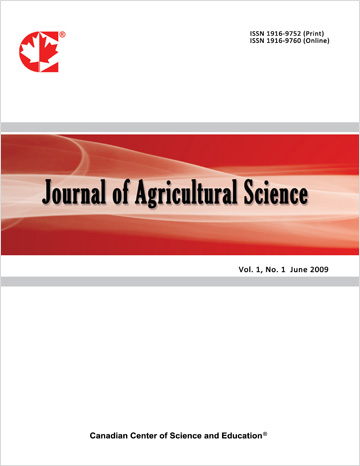Phenological Study and Effect of Two Pollination Techniques on Groundnut Fruiting
- Bi Tra Achille Irie
- Inza Jesus Fofana
- Deless Edmond Fulgence Thiemele
- Yacouba Bakayoko
Abstract
Arachis hypogaea Linné is an annual legume and is one of the most widely cultivated oilseeds in West Africa and even worldwide for its high oil content. However, the floral phenology of groundnut accessions and their typology are not fully known. Similarly, the reliable manual pollination technique used to cross-breed elite genotypes of Arachis hypogea is not sufficiently well known. With a view to improving the local yield of this crop, the present study was conducted to assess the morphological diversity of six accessions linked to floral biology, and to evaluate two manual pollination techniques A and B. The results showed morphological variability within accessions. Thus, except for flower length, the other characters (flower width; number of flowers per peduncle; time between flower bloom and pod maturity) significantly differentiated the 6 groundnut accessions. Then, accessions PA1-19, PA1-21, PA8-1, PA12-5, P12-7 and PA17-2 were differentiated by the four characters reflecting floral phenology. Technique B was more effective than technique A, with success rates of 61.35% and 42.04% respectively. This superiority of technique B could be explained by the presence of the carina during pollination. The combination of morphological and phenological floral characteristics showed that accessions PA1-21 and PA1-19 performed better. These accessions could be used in crosses based on the manual pollination technique identified, to create high-performance groundnut hybrids in Côte d’Ivoire.
- Full Text:
 PDF
PDF
- DOI:10.5539/jas.v17n5p70
Journal Metrics
- h-index: 67
- i10-index: 839
- WJCI (2023): 0.884
- WJCI Impact Factor (2023): 0.196
Index
- AGRICOLA
- AGRIS
- BASE (Bielefeld Academic Search Engine)
- Berkeley Library
- CAB Abstracts
- ChronosHub
- CiteSeerx
- CNKI Scholar
- Copyright Clearance Center
- CrossRef
- DESY Publication Database
- DTU Library
- e-Library
- EBSCOhost
- EconPapers
- Elektronische Zeitschriftenbibliothek (EZB)
- EuroPub Database
- Excellence in Research for Australia (ERA)
- Google Scholar
- Harvard Library
- IDEAS
- iDiscover
- Jisc Library Hub Discover
- JournalTOCs
- KindCongress
- LIVIVO (ZB MED)
- LOCKSS
- Max Planck Institutes
- Mendeley
- MIAR
- Mir@bel
- NLM Catalog PubMed
- Norwegian Centre for Research Data (NSD)
- Open J-Gate
- OUCI
- PKP Open Archives Harvester
- Polska Bibliografia Naukowa
- Qualis/CAPES
- RefSeek
- RePEc
- ROAD
- ScienceOpen
- Scilit
- SCiNiTO
- Semantic Scholar
- SHERPA/RoMEO
- Southwest-German Union Catalogue
- Standard Periodical Directory
- Stanford Libraries
- SUDOC
- Swisscovery
- Technische Informationsbibliothek (TIB)
- Trove
- UCR Library
- Ulrich's
- UniCat
- Universe Digital Library
- WorldCat
- WRLC Catalog
- Zeitschriften Daten Bank (ZDB)
Contact
- Anne BrownEditorial Assistant
- jas@ccsenet.org
